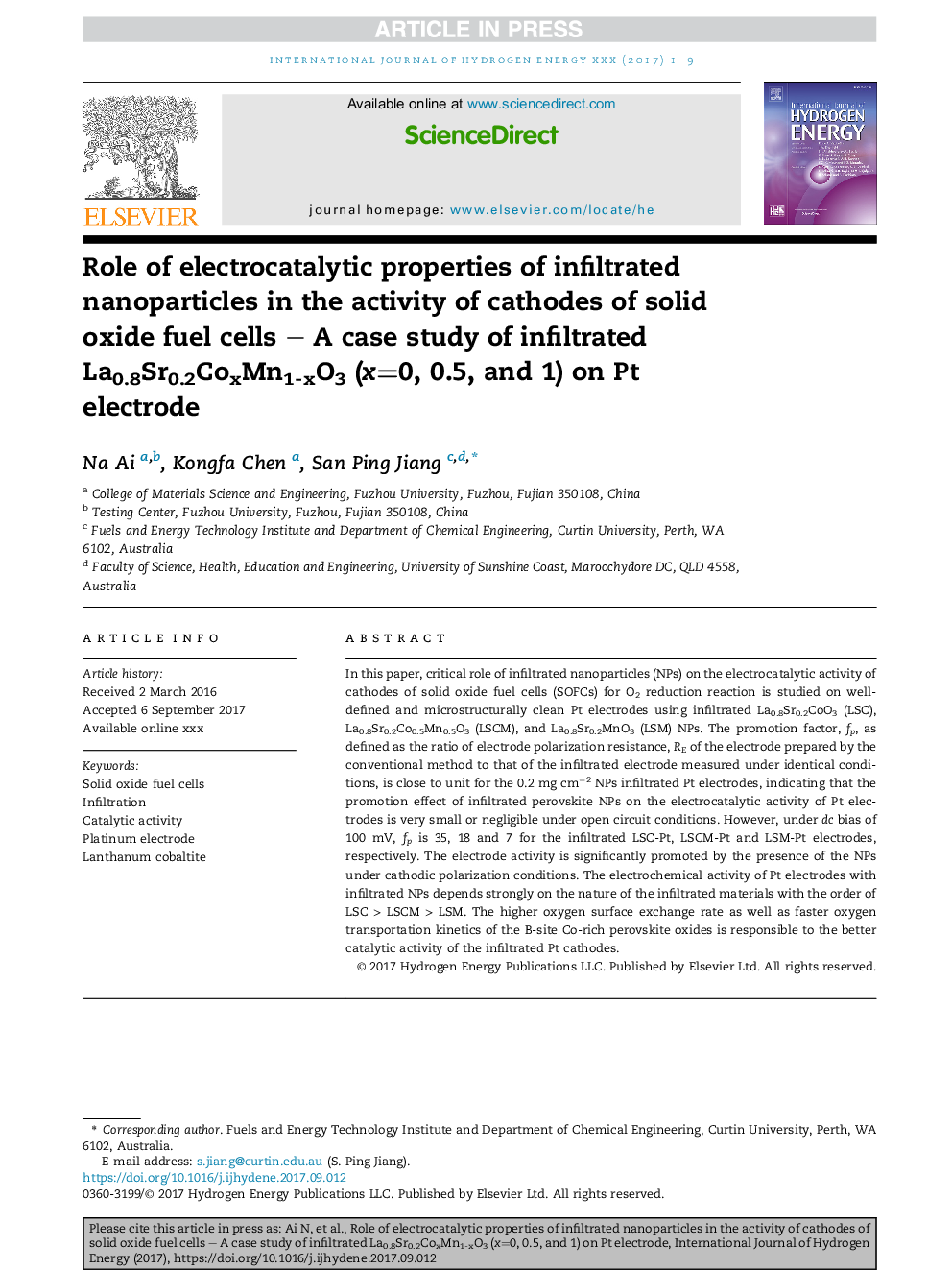| Article ID | Journal | Published Year | Pages | File Type |
|---|---|---|---|---|
| 7709268 | International Journal of Hydrogen Energy | 2017 | 9 Pages |
Abstract
In this paper, critical role of infiltrated nanoparticles (NPs) on the electrocatalytic activity of cathodes of solid oxide fuel cells (SOFCs) for O2 reduction reaction is studied on well-defined and microstructurally clean Pt electrodes using infiltrated La0.8Sr0.2CoO3 (LSC), La0.8Sr0.2Co0.5Mn0.5O3 (LSCM), and La0.8Sr0.2MnO3 (LSM) NPs. The promotion factor, fp, as defined as the ratio of electrode polarization resistance, RE of the electrode prepared by the conventional method to that of the infiltrated electrode measured under identical conditions, is close to unit for the 0.2 mg cmâ2 NPs infiltrated Pt electrodes, indicating that the promotion effect of infiltrated perovskite NPs on the electrocatalytic activity of Pt electrodes is very small or negligible under open circuit conditions. However, under dc bias of 100 mV, fp is 35, 18 and 7 for the infiltrated LSC-Pt, LSCM-Pt and LSM-Pt electrodes, respectively. The electrode activity is significantly promoted by the presence of the NPs under cathodic polarization conditions. The electrochemical activity of Pt electrodes with infiltrated NPs depends strongly on the nature of the infiltrated materials with the order of LSC > LSCM > LSM. The higher oxygen surface exchange rate as well as faster oxygen transportation kinetics of the B-site Co-rich perovskite oxides is responsible to the better catalytic activity of the infiltrated Pt cathodes.
Related Topics
Physical Sciences and Engineering
Chemistry
Electrochemistry
Authors
Na Ai, Kongfa Chen, San Ping Jiang,
